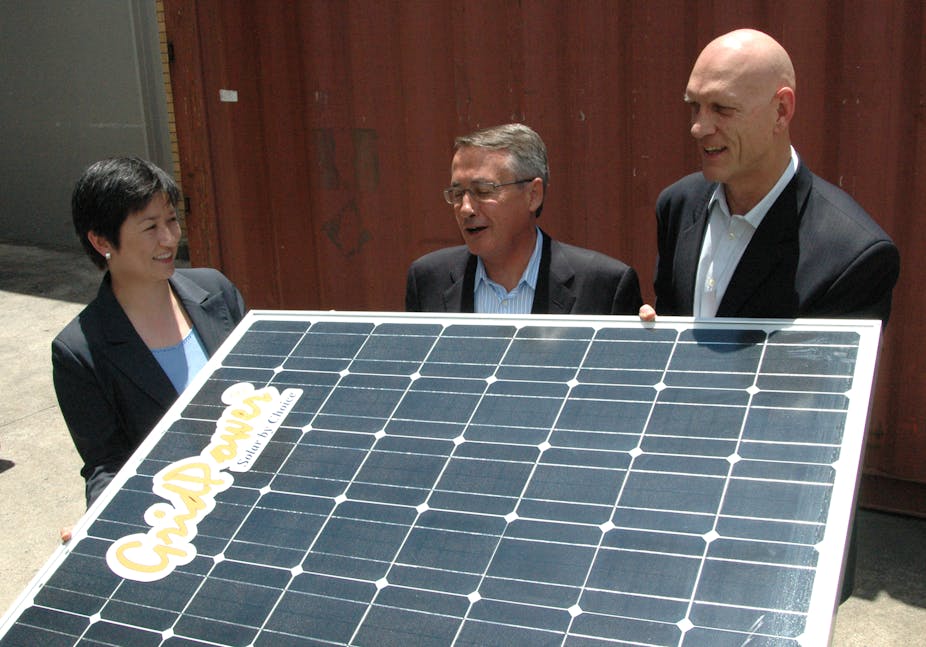Sadly, the major environmental policy announced in the Federal Budget yesterday was not an environmental policy at all but the change to the Fringe Benefits Tax.
The government announced changes to the car fringe benefits rule from the statutory formula method, under which the calculated fringe benefit decreases with greater distances travelled, to a single rate of 20% regardless of distance travelled.
In the past, this absurd policy has encouraged people to drive longer distances, and thus emit more pollution, to reduce the tax paid.
The measure has caused massive spikes in driving in the days before cut-off dates, needless long trips and in some cases aimless driving up and down highways just to reach certain thresholds. It is hard to imagine a more carbon-dumb policy.
Unfortunately, the main objective here and elsewhere in the budget is to reduce spending to support the equally absurd obsession with returning the budget to surplus.
Missed opportunities
Budget deficits and rising debt are beneficial if the investments made increase the capacity of the country to create wealth. But the government’s budget has failed to grab the significant opportunity to turn Australia into a world leader in renewable energy.
In contrast, spending on renewable energy and a carbon smart Australia has been reduced in a number of areas. The major “savings” include:
halting the “Green Start” program, which aimed to deliver sustainability assessments for homes and help low-income households improve their energy efficiency (saves the government $210 million over three years)
the previously announced end to the green car innovation fund (saves the government $434 million dollars over five years, to be spent on disaster relief)
reducing or ending solar flagships and carbon capture and storage programs (again to support disaster and flood relief)
reducing funding to the national solar schools program ($156 million over four years).
The government will no doubt justify these reductions by pointing to the future implementation of a carbon tax, the most “efficient” method to achieve a green economy and encourage renewable energy.
But the carbon tax is not policy so at this stage these reductions can only be seen as a disinvestment in a carbon-smart Australia.
Carbon price won’t work on its own
Regardless, any carbon price requires complementary measures to support the growth of renewable substitutes.
The “efficiency” of carbon pricing is premised on assumptions of perfect competition in the energy market, zero transaction costs, and perfect information.
Quite obviously, this does not exist.
Direct spending measures can be the most efficient method when there is no market in place, and when the situation to be addressed is dire, which the climate problems surely are (in contrast to the government deficit and debt).
The great ecological economist, Herman Daly, once laid down his principles for sustainability. They included investing the economic rents from the exploitation of fossil fuels into renewable substitutes.
This budget does not follow his thinking.
The excellent work done by Beyond Zero Emissions is also neglected.
BZE has laid down a program to spend a mere $38 billion a year for ten years (around 10% of the budget revenue) to completely convert Australia to a renewable energy economy.
Not all bad news
Of course, some positives came out in the budget including:
$20 million over four years to support greenhouse and energy reporting
$13.7 million to support the solar cities program
$84 million over four years to continue the environmental stewardship program which provides long term payments to land owners to protect high conservation areas
a national wildlife corridors plan to guide future conservation investment ($10 million over three years coming from existing funding under the Renewable Energy Future Fund).
But these positives are dwarfed by the negatives and fail to arrest the feeling that a massive opportunity has been missed.
The changes to the budget also hide the existing and long-standing support provided by the government to the fossil fuel energy and mining industry through direct and indirect subsidies, and the implicit subsidies they receive from not having to pay for their pollution.
The impact of the government’s budget is, as always, not carbon smart.
Many newly introduced policies which would have shifted the balance, even if only slightly, have been removed.
They will be justified in terms of a future policy which is not policy yet, and which requires the kinds of complementary investments in renewable energy this budget has failed to deliver.

